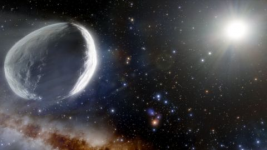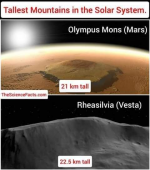hopefully ours doesnt. it would get very cold and dark.Over 700 Stars Mysteriously Vanished In The Last 70 Years, But Why?
Space Thread
- Thread starter B00Mer
- Start date
You are using an out of date browser. It may not display this or other websites correctly.
You should upgrade or use an alternative browser.
You should upgrade or use an alternative browser.
hopefully ours doesnt. it would get very cold and dark.

We'd just live underground where it's warm eating mushrooms...
What if Earth were flung out of the Solar System?:
Amazingly, I've just managed to take a photo of Jupiter on my camera phone. Prepare to be amazed.
It's near the centre...
View attachment 9747
Lol...not a bad job tbh!! It's actually pretty amazing what you can do with some basic equipment and a bit of time these days.
This photo was taken from my backyard last month with a standard DSLR camera and 70-300mm kit lens. I did have it on a tracking mount so I could take 2 minute exposures without star-trailing.
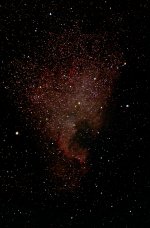
North American Nebula
I keep meaning to save up for a
I keep meaning to save up for a telescope and then spend nights at weekends looking at various astronomical objects through it in my yard or one of my three gardens. Instead, I just spend my wages on beer and curries.
Lol...not a bad job tbh!! It's actually pretty amazing what you can do with some basic equipment and a bit of time these days.
This photo was taken from my backyard last month with a standard DSLR camera and 70-300mm kit lens. I did have it on a tracking mount so I could take 2 minute exposures without star-trailing.
View attachment 10587
North American Nebula
I keep meaning to save up for a telescope and then spend nights at weekends looking at various astronomical objects through it in my yard or one of my three gardens. Instead, I just spend my wages on beer and curries.
If you're just thinking of trying some visual astronomy, a decent pair of binoculars and a star chart or planetarium app will get you started. I just picked up a pair of 15x70 binoculars and they show jupiters moons and Saturn's rings.I keep meaning to save up for a
I keep meaning to save up for a telescope and then spend nights at weekends looking at various astronomical objects through it in my yard or one of my three gardens. Instead, I just spend my wages on beer and curries.
And you can also have a few beers while you're out there.
Russian anti-satellite missile test endangers space station crew: NASA
Author of the article:Reuters
Reuters
Idrees Ali and Steve Gorman
Publishing date:Nov 15, 2021 • 8 hours ago • 3 minute read • Join the conversation
In this file photo taken on March 7, 2011, this NASA handout image shows a close-up view of the International Space Station is featured in this image photographed by an STS-133 crew member on space shuttle Discovery after the station and shuttle began their post-undocking relative separation.
In this file photo taken on March 7, 2011, this NASA handout image shows a close-up view of the International Space Station is featured in this image photographed by an STS-133 crew member on space shuttle Discovery after the station and shuttle began their post-undocking relative separation. PHOTO BY NASA /AFP via Getty Images
Article content
WASHINGTON — An anti-satellite missile test Russia conducted on Monday generated a debris field in low-Earth orbit that endangered the International Space Station and will pose a hazard to space activities for years, U.S. officials said.
Advertisement
STORY CONTINUES BELOW
Article content
The seven-member space station crew – four U.S. astronauts, a German astronaut and two Russian cosmonauts – were directed to take shelter in their docked spaceship capsules for two hours after the test as a precaution to allow for a quick getaway had it been necessary, NASA said.
The research lab, orbiting about 402 kilometres above Earth, continued to pass through or near the debris cluster every 90 minutes, but NASA specialists determined it was safe for the crew to return to the station’s interior after the third pass, the agency said.
The crew was also ordered to seal off hatches to several modules of the International Space Station (ISS) for the time being, according to NASA.
“NASA will continue monitoring the debris in the coming days and beyond to ensure the safety of our crew in orbit,” NASA chief Bill Nelson said in the statement.
Advertisement
STORY CONTINUES BELOW
Article content
Experts say the testing of weapons that shatter satellites in orbit pose a space hazard by creating clouds of fragments that can collide with other objects, setting off a chain reaction of projectiles through Earth orbit.
THOUSANDS OF FRAGMENTS
The Russian military and ministry of defence were not immediately available for comment. A message posted on Twitter by the Russian space agency Roscosmos downplayed the danger.
“The orbit of the object, which forced the crew today to move into spacecraft according to standard procedures, has moved away from the ISS orbit,” Roscosmos tweeted . “The station is in the green zone.”
The direct-ascent anti-satellite missile fired by Russia into one of its own satellites generated more than 1,500 pieces of “trackable orbital debris” and would likely spawn hundreds of thousands of smaller fragments, the U.S. Space Command said in a statement.
Advertisement
STORY CONTINUES BELOW
Article content
“Russia has demonstrated a deliberate disregard for the security, safety, stability and long-term sustainability of the space domain for all nations,” space command chief U.S. Army General James Dickinson said.
The debris from the missile test “will continue to pose a threat to activities in outer space for years to come, putting satellites and space missions at risk, as well as forcing more collision avoidance maneuvers,” he said.
U.S. Secretary of State Antony Blinken condemned the missile test as “reckless and irresponsible.” At the Pentagon, spokesman John Kirby said the test showed the need to firmly establish norms of behavior in space.
“It is unthinkable that Russia would endanger not only the American and international partner astronauts on the ISS, but also their own cosmonauts,” Nelson said. He said the cloud of debris also posed a threat to a separate Chinese space station under construction and the three-member crew of “taikonauts” aboard that outpost.
Advertisement
STORY CONTINUES BELOW
Article content
The incident came just four days after the latest group of four space station astronauts – Americans Raja Chair, Tom Marshburn and Kayla Barron of NASA and European Space Agency crewmate Matthias Maurer of Germany – arrived at the orbiting platform to begin a six-month science mission.
They were welcomed by three space station crew members already on board – U.S. astronaut Mark Vande Hei and Russian cosmonauts Anton Shkaplerov and Pyotr Dubrov.
“Thanks for the crazy but well-coordinated day. We really appreciated all the situational awareness you gave us,” Vande Hei said in a Monday radio transmission to NASA posted online by Space.com. “It was certainly a great way to bond as a crew, starting off our very first workday in space.”
Advertisement
STORY CONTINUES BELOW
Article content
The space station, spanning the size of an American football field end to end, has been continuously occupied since November 2000, operated by an international partnership of five space agencies from 15 countries, including Russia’s Roscosmos.
Russia is not the first country to conduct anti-satellite tests in space. The United States performed the first in 1959, when satellites were rare and new.
In April Russia carried out another test of an anti-satellite missile as officials have said that space will increasingly become an important domain for warfare.
In 2019, India shot down one of its own satellites in low-Earth orbit with a ground-to-space missile.
These tests have raised questions about the long-term sustainability of space operations essential to a huge range of commercial activities, from telecommunications and weather forecasting to banking and GPS services.
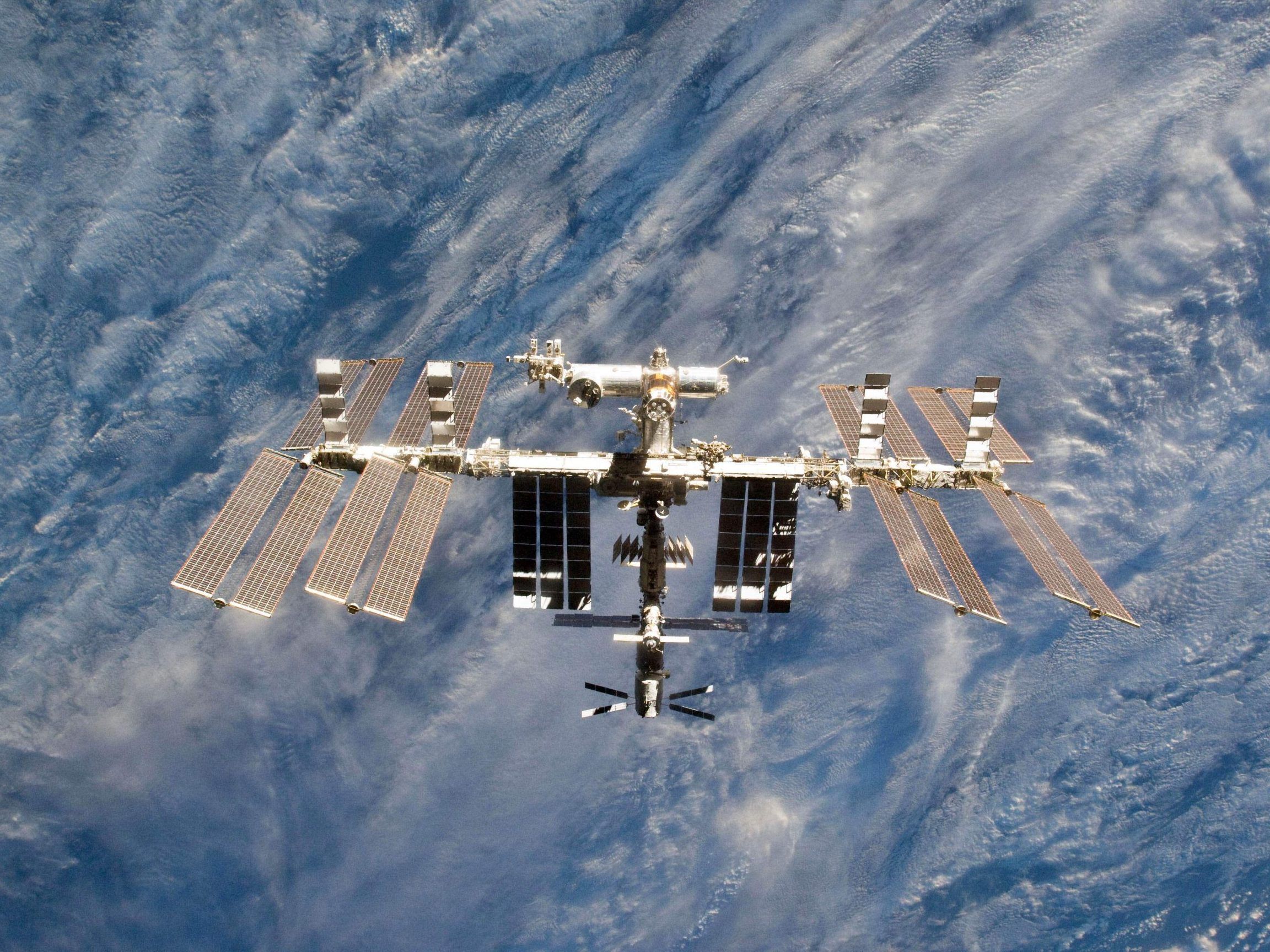
 torontosun.com
torontosun.com
Author of the article:Reuters
Reuters
Idrees Ali and Steve Gorman
Publishing date:Nov 15, 2021 • 8 hours ago • 3 minute read • Join the conversation
In this file photo taken on March 7, 2011, this NASA handout image shows a close-up view of the International Space Station is featured in this image photographed by an STS-133 crew member on space shuttle Discovery after the station and shuttle began their post-undocking relative separation.
In this file photo taken on March 7, 2011, this NASA handout image shows a close-up view of the International Space Station is featured in this image photographed by an STS-133 crew member on space shuttle Discovery after the station and shuttle began their post-undocking relative separation. PHOTO BY NASA /AFP via Getty Images
Article content
WASHINGTON — An anti-satellite missile test Russia conducted on Monday generated a debris field in low-Earth orbit that endangered the International Space Station and will pose a hazard to space activities for years, U.S. officials said.
Advertisement
STORY CONTINUES BELOW
Article content
The seven-member space station crew – four U.S. astronauts, a German astronaut and two Russian cosmonauts – were directed to take shelter in their docked spaceship capsules for two hours after the test as a precaution to allow for a quick getaway had it been necessary, NASA said.
The research lab, orbiting about 402 kilometres above Earth, continued to pass through or near the debris cluster every 90 minutes, but NASA specialists determined it was safe for the crew to return to the station’s interior after the third pass, the agency said.
The crew was also ordered to seal off hatches to several modules of the International Space Station (ISS) for the time being, according to NASA.
“NASA will continue monitoring the debris in the coming days and beyond to ensure the safety of our crew in orbit,” NASA chief Bill Nelson said in the statement.
Advertisement
STORY CONTINUES BELOW
Article content
Experts say the testing of weapons that shatter satellites in orbit pose a space hazard by creating clouds of fragments that can collide with other objects, setting off a chain reaction of projectiles through Earth orbit.
THOUSANDS OF FRAGMENTS
The Russian military and ministry of defence were not immediately available for comment. A message posted on Twitter by the Russian space agency Roscosmos downplayed the danger.
“The orbit of the object, which forced the crew today to move into spacecraft according to standard procedures, has moved away from the ISS orbit,” Roscosmos tweeted . “The station is in the green zone.”
The direct-ascent anti-satellite missile fired by Russia into one of its own satellites generated more than 1,500 pieces of “trackable orbital debris” and would likely spawn hundreds of thousands of smaller fragments, the U.S. Space Command said in a statement.
Advertisement
STORY CONTINUES BELOW
Article content
“Russia has demonstrated a deliberate disregard for the security, safety, stability and long-term sustainability of the space domain for all nations,” space command chief U.S. Army General James Dickinson said.
The debris from the missile test “will continue to pose a threat to activities in outer space for years to come, putting satellites and space missions at risk, as well as forcing more collision avoidance maneuvers,” he said.
U.S. Secretary of State Antony Blinken condemned the missile test as “reckless and irresponsible.” At the Pentagon, spokesman John Kirby said the test showed the need to firmly establish norms of behavior in space.
“It is unthinkable that Russia would endanger not only the American and international partner astronauts on the ISS, but also their own cosmonauts,” Nelson said. He said the cloud of debris also posed a threat to a separate Chinese space station under construction and the three-member crew of “taikonauts” aboard that outpost.
Advertisement
STORY CONTINUES BELOW
Article content
The incident came just four days after the latest group of four space station astronauts – Americans Raja Chair, Tom Marshburn and Kayla Barron of NASA and European Space Agency crewmate Matthias Maurer of Germany – arrived at the orbiting platform to begin a six-month science mission.
They were welcomed by three space station crew members already on board – U.S. astronaut Mark Vande Hei and Russian cosmonauts Anton Shkaplerov and Pyotr Dubrov.
“Thanks for the crazy but well-coordinated day. We really appreciated all the situational awareness you gave us,” Vande Hei said in a Monday radio transmission to NASA posted online by Space.com. “It was certainly a great way to bond as a crew, starting off our very first workday in space.”
Advertisement
STORY CONTINUES BELOW
Article content
The space station, spanning the size of an American football field end to end, has been continuously occupied since November 2000, operated by an international partnership of five space agencies from 15 countries, including Russia’s Roscosmos.
Russia is not the first country to conduct anti-satellite tests in space. The United States performed the first in 1959, when satellites were rare and new.
In April Russia carried out another test of an anti-satellite missile as officials have said that space will increasingly become an important domain for warfare.
In 2019, India shot down one of its own satellites in low-Earth orbit with a ground-to-space missile.
These tests have raised questions about the long-term sustainability of space operations essential to a huge range of commercial activities, from telecommunications and weather forecasting to banking and GPS services.

Russian anti-satellite missile test endangers space station crew: NASA
WASHINGTON — An anti-satellite missile test Russia conducted on Monday generated a debris field in low-Earth orbit that endangered the International Space Station a…
Partial lunar eclipse will be longest in almost 600 years
The next one is expected on Feb. 8, 2669
Author of the article enette Wilford
enette Wilford
Publishing date:Nov 18, 2021 • 20 hours ago • 2 minute read • Join the conversation
A partial lunar eclipse on August 7, 2017 in Regensburg, Germany.
A partial lunar eclipse on August 7, 2017 in Regensburg, Germany. Getty Images
Article content
The longest partial lunar eclipse this century is fast approaching. Here’s what you need to know to marvel at the super-rare event.
First, hope the forecast is in your favour and there are clear skies Thursday night as the moon passes into the southern-most part of the Earth’s shadow in the early hours of Nov. 19.
More specifically, the last lunar eclipse of the year starts just after 1 a.m. ET on Friday, according to The Weather Network , and is expected to peak at 4:03 a.m. ET.
It is predicted to last three hours, 28 minutes and 24 seconds, and the full eclipse will be for six hours and one minute, the Holcomb Observatory in Indiana says.
Advertisement
STORY CONTINUES BELOW
Article content
“Partial lunar eclipses might not be quite as spectacular as total lunar eclipses –- where the moon is completely covered in Earth’s shadow -– but they occur more frequently,” said NASA . “And that just means more opportunities to witness little changes in our solar system that sometimes occur right before our eyes.”
The Weather Network predicts southern Ontario, southern Quebec, central Saskatchewan, and central Alberta to be the best places across Canada for viewing.
Those who want to marvel at the moon might not notice the “reddish tinge” for the first while, the weather portal notes, as your eyes will “struggle with the contrast between the dark lunar surface in the umbra and the brighter part that’s still in the penumbra.”
Advertisement
STORY CONTINUES BELOW
Article content
Once that colour brightens and becomes more apparent, there could be a sensational sight to behold. Again, it all depends on how cooperative the weather is.
So rather than the moon turning completely black because of the Earth’s shadow, viewers will see the moon take on a reddish-brown colour that is essentially a reflection of our planet’s sunrises and sunsets.
The longest partial lunar eclipse up to now was an impressive three hours, 28 minutes and 48 seconds – but that was 581 years ago, on Feb. 18, 1440, according to NASA.
The next one is expected on Feb. 8, 2669, so it’s safe to say Friday is your only chance to catch this phenomenon.


 theweathernetwork.com
theweathernetwork.com

 torontosun.com
sorry for the late posting.
torontosun.com
sorry for the late posting. 

The next one is expected on Feb. 8, 2669
Author of the article
Publishing date:Nov 18, 2021 • 20 hours ago • 2 minute read • Join the conversation
A partial lunar eclipse on August 7, 2017 in Regensburg, Germany.
A partial lunar eclipse on August 7, 2017 in Regensburg, Germany. Getty Images
Article content
The longest partial lunar eclipse this century is fast approaching. Here’s what you need to know to marvel at the super-rare event.
First, hope the forecast is in your favour and there are clear skies Thursday night as the moon passes into the southern-most part of the Earth’s shadow in the early hours of Nov. 19.
More specifically, the last lunar eclipse of the year starts just after 1 a.m. ET on Friday, according to The Weather Network , and is expected to peak at 4:03 a.m. ET.
It is predicted to last three hours, 28 minutes and 24 seconds, and the full eclipse will be for six hours and one minute, the Holcomb Observatory in Indiana says.
Advertisement
STORY CONTINUES BELOW
Article content
“Partial lunar eclipses might not be quite as spectacular as total lunar eclipses –- where the moon is completely covered in Earth’s shadow -– but they occur more frequently,” said NASA . “And that just means more opportunities to witness little changes in our solar system that sometimes occur right before our eyes.”
The Weather Network predicts southern Ontario, southern Quebec, central Saskatchewan, and central Alberta to be the best places across Canada for viewing.
Those who want to marvel at the moon might not notice the “reddish tinge” for the first while, the weather portal notes, as your eyes will “struggle with the contrast between the dark lunar surface in the umbra and the brighter part that’s still in the penumbra.”
Advertisement
STORY CONTINUES BELOW
Article content
Once that colour brightens and becomes more apparent, there could be a sensational sight to behold. Again, it all depends on how cooperative the weather is.
So rather than the moon turning completely black because of the Earth’s shadow, viewers will see the moon take on a reddish-brown colour that is essentially a reflection of our planet’s sunrises and sunsets.
The longest partial lunar eclipse up to now was an impressive three hours, 28 minutes and 48 seconds – but that was 581 years ago, on Feb. 18, 1440, according to NASA.
The next one is expected on Feb. 8, 2669, so it’s safe to say Friday is your only chance to catch this phenomenon.


Everything you need to know about November's ultra-rare partial lunar eclipse - The Weather Network
November's Full Moon produced the longest partial lunar eclipse seen in centuries.

Partial lunar eclipse will be longest in almost 600 years
The longest partial lunar eclipse this century is approaching so if you want to marvel at this rare event, here’s what you need to know.
It was pretty cool. I was awake to see it along with a couple straggler meteorites from the Leonids.
NASA to launch test mission of asteroid-deflecting spacecraft
Author of the article:Reuters
Reuters
Steve Gorman
Publishing date:Nov 23, 2021 • 20 hours ago • 2 minute read • Join the conversation
This artist's illustration obtained from NASA on Nov. 4, 2021 shows the DART spacecraft from behind prior to impact at the Didymos binary system.
This artist's illustration obtained from NASA on Nov. 4, 2021 shows the DART spacecraft from behind prior to impact at the Didymos binary system. PHOTO BY HANDOUT/NASA /AFP via Getty Images
Article content
LOS ANGELES — A SpaceX rocket was set to blast off from California late Tuesday as NASA seeks to demonstrate a first-of-its-kind planetary defense system, designed to deflect an asteroid from a potential doomsday collision with Earth.
Advertisement
STORY CONTINUES BELOW
Article content
The DART mission will test NASA’s ability to alter an asteroid’s trajectory with kinetic force – crashing a robot spacecraft into it at high speed and nudging the space boulder just enough to keep our planet out of harm’s way.
DART’s target is a tiny fraction of the size of the cataclysmic Chicxulub asteroid that slammed into Earth about 66 million years ago, killing most of the planet’s animal species. It is not on a path that will cause it to hit Earth in the foreseeable future.
But scientists say smaller asteroids are far more common and pose a far greater theoretical threat to Earth in the near term.
NASA has hired Elon Musk’s company SpaceX to launch DART aboard a Falcon 9 rocket at 10:20 p.m. Pacific time on Tuesday (1:20 a.m. Eastern) from Vandenberg Air Force Base on the California coast, about 150 miles northwest of Los Angeles.
Advertisement
STORY CONTINUES BELOW
Article content
If liftoff is postponed NASA has an 84-day launch window in which to try again.
Once released into space, DART will journey 10 months to its destination, some 6.8 million miles (11 million km) from Earth.
Its target is an asteroid “moonlet” the size of a football stadium that orbits a much larger chunk of rock – about five times bigger – in a binary asteroid system named Didymos, the Greek word for twin.
The moonlet, called Dimorphos, is one of the smallest astronomical objects to receive a permanent name. But at 525 feet (160 km) in diameter, its size is typical among the known asteroids – rubble-like remnants left over from formation of the solar system 4.6 billion years ago.\
SIMPLER THAN ‘ARMAGEDDON’
Scientists chose the Didymos system because its relative proximity to Earth and dual-asteroid configuration make it ideal to observe the results of the impact.
Advertisement
STORY CONTINUES BELOW
Article content
The key to avoiding a killer asteroid is to detect it well in advance and be ready with the means of changing its course, NASA planetary defense officer Lindley Johnson told a media briefing this month.
“We don’t want to be in a situation where an asteroid is headed toward Earth and then have to be testing this kind of capability,” he said.
The team behind DART, short for Double Asteroid Redirection Test, has determined that slamming a car-sized projectile into a Dimorphos-sized asteroid at 15,000 miles per hour (24,000 kph) should do the trick.
The DART spacecraft, a cube-shaped box with two rectangular solar arrays, is due to rendezvous with the Didymos-Dimorphos pair in late September 2022.
Cameras mounted on the impactor and on a briefcase-sized mini-spacecraft released from DART about 10 days beforehand will record the collision.
Observations from ground-based telescopes and radar will then measure how much the moonlet’s orbit around Didymos changes.
The DART team is expecting to shorten the orbital track by about 10 minutes but would consider at least 73 seconds a success.
The entire cost of the DART project will run about $330 million, according to Lindley, well below that of many of NASA’s most ambitious science missions.
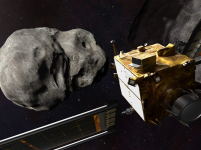
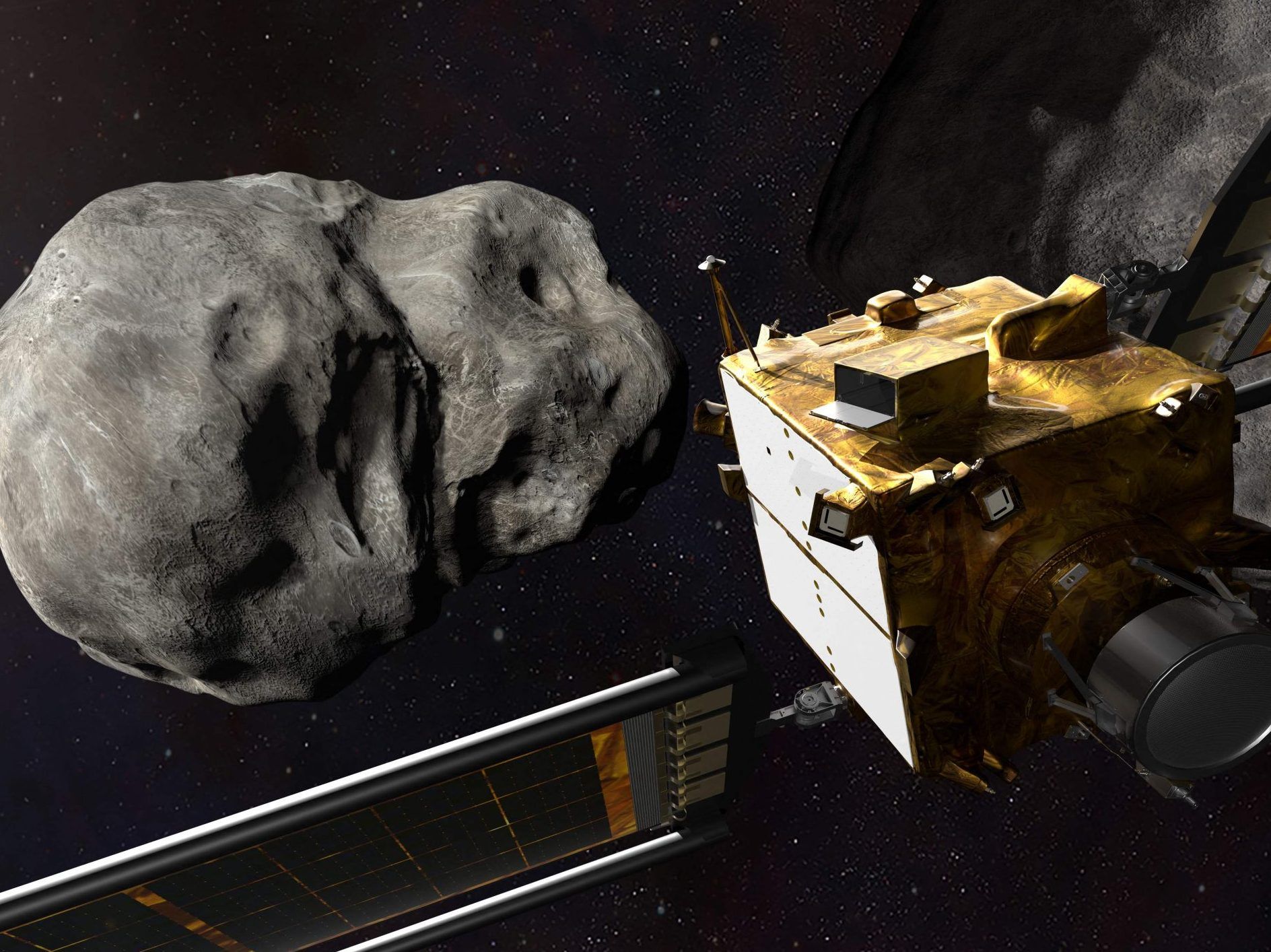
 torontosun.com
torontosun.com
Author of the article:Reuters
Reuters
Steve Gorman
Publishing date:Nov 23, 2021 • 20 hours ago • 2 minute read • Join the conversation
This artist's illustration obtained from NASA on Nov. 4, 2021 shows the DART spacecraft from behind prior to impact at the Didymos binary system.
This artist's illustration obtained from NASA on Nov. 4, 2021 shows the DART spacecraft from behind prior to impact at the Didymos binary system. PHOTO BY HANDOUT/NASA /AFP via Getty Images
Article content
LOS ANGELES — A SpaceX rocket was set to blast off from California late Tuesday as NASA seeks to demonstrate a first-of-its-kind planetary defense system, designed to deflect an asteroid from a potential doomsday collision with Earth.
Advertisement
STORY CONTINUES BELOW
Article content
The DART mission will test NASA’s ability to alter an asteroid’s trajectory with kinetic force – crashing a robot spacecraft into it at high speed and nudging the space boulder just enough to keep our planet out of harm’s way.
DART’s target is a tiny fraction of the size of the cataclysmic Chicxulub asteroid that slammed into Earth about 66 million years ago, killing most of the planet’s animal species. It is not on a path that will cause it to hit Earth in the foreseeable future.
But scientists say smaller asteroids are far more common and pose a far greater theoretical threat to Earth in the near term.
NASA has hired Elon Musk’s company SpaceX to launch DART aboard a Falcon 9 rocket at 10:20 p.m. Pacific time on Tuesday (1:20 a.m. Eastern) from Vandenberg Air Force Base on the California coast, about 150 miles northwest of Los Angeles.
Advertisement
STORY CONTINUES BELOW
Article content
If liftoff is postponed NASA has an 84-day launch window in which to try again.
Once released into space, DART will journey 10 months to its destination, some 6.8 million miles (11 million km) from Earth.
Its target is an asteroid “moonlet” the size of a football stadium that orbits a much larger chunk of rock – about five times bigger – in a binary asteroid system named Didymos, the Greek word for twin.
The moonlet, called Dimorphos, is one of the smallest astronomical objects to receive a permanent name. But at 525 feet (160 km) in diameter, its size is typical among the known asteroids – rubble-like remnants left over from formation of the solar system 4.6 billion years ago.\
SIMPLER THAN ‘ARMAGEDDON’
Scientists chose the Didymos system because its relative proximity to Earth and dual-asteroid configuration make it ideal to observe the results of the impact.
Advertisement
STORY CONTINUES BELOW
Article content
The key to avoiding a killer asteroid is to detect it well in advance and be ready with the means of changing its course, NASA planetary defense officer Lindley Johnson told a media briefing this month.
“We don’t want to be in a situation where an asteroid is headed toward Earth and then have to be testing this kind of capability,” he said.
The team behind DART, short for Double Asteroid Redirection Test, has determined that slamming a car-sized projectile into a Dimorphos-sized asteroid at 15,000 miles per hour (24,000 kph) should do the trick.
The DART spacecraft, a cube-shaped box with two rectangular solar arrays, is due to rendezvous with the Didymos-Dimorphos pair in late September 2022.
Cameras mounted on the impactor and on a briefcase-sized mini-spacecraft released from DART about 10 days beforehand will record the collision.
Observations from ground-based telescopes and radar will then measure how much the moonlet’s orbit around Didymos changes.
The DART team is expecting to shorten the orbital track by about 10 minutes but would consider at least 73 seconds a success.
The entire cost of the DART project will run about $330 million, according to Lindley, well below that of many of NASA’s most ambitious science missions.


NASA to launch test mission of asteroid-deflecting spacecraft
LOS ANGELES — A SpaceX rocket was set to blast off from California late Tuesday as NASA seeks to demonstrate a first-of-its-kind planetary defense system, designed …
The math is complex, but exact. But ya never know until ya fire that puppy up.
Earth's space junk could form Saturn-like rings
Author of the article ostmedia News
ostmedia News
Publishing date:Nov 24, 2021 • 11 hours ago • 1 minute read • Join the conversation
GRAPHIC - (CIRCA 1989): This National Aeronautics and Space Administration (NASA) handout image shows a graphical representation of space debris in low Earth orbit. According to the European Space Agency there are 8,500 objects larger than 10 cm (approximately 3.9 inches) orbiting the earth and 150,000 larger than 1 cm (approximately 0.39 inches). NASA investigators are looking into the possibility that space debris may have caused the break up of the Space Shuttle Columbia upon reentry February 1, 2003 over Texas.
GRAPHIC - (CIRCA 1989): This National Aeronautics and Space Administration (NASA) handout image shows a graphical representation of space debris in low Earth orbit. According to the European Space Agency there are 8,500 objects larger than 10 cm (approximately 3.9 inches) orbiting the earth and 150,000 larger than 1 cm (approximately 0.39 inches). NASA investigators are looking into the possibility that space debris may have caused the break up of the Space Shuttle Columbia upon reentry February 1, 2003 over Texas. PHOTO BY NASA /Getty Images
Article content
Our space junk might become decorative.
Advertisement
STORY CONTINUES BELOW
Article content
So says Jake Abbott, a mechanical engineering professor at the University of Utah, who says all of the space debris orbiting Earth could eventually create a Saturn-like display of rings.
“Earth is on course to have its own rings,” Abbott told The Salt Lake Tribune this month. “They’ll just be made of junk.”
Abbott and other researchers are working on a solution, which they recently released in a report in the journal Nature .
NASA said about six months ago that there are approximately 100 million pieces of debris larger than a millimeter orbiting the earth. Many of the pieces are large.
Most space junk burns up in the atmosphere before getting to earth.
Abbott and his team have proposed using magnets (he likened it to a tractor beam) to clean up some of the space junk.
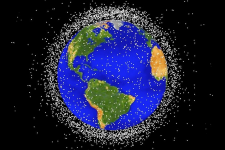

 torontosun.com
torontosun.com
Author of the article
Publishing date:Nov 24, 2021 • 11 hours ago • 1 minute read • Join the conversation
GRAPHIC - (CIRCA 1989): This National Aeronautics and Space Administration (NASA) handout image shows a graphical representation of space debris in low Earth orbit. According to the European Space Agency there are 8,500 objects larger than 10 cm (approximately 3.9 inches) orbiting the earth and 150,000 larger than 1 cm (approximately 0.39 inches). NASA investigators are looking into the possibility that space debris may have caused the break up of the Space Shuttle Columbia upon reentry February 1, 2003 over Texas.
GRAPHIC - (CIRCA 1989): This National Aeronautics and Space Administration (NASA) handout image shows a graphical representation of space debris in low Earth orbit. According to the European Space Agency there are 8,500 objects larger than 10 cm (approximately 3.9 inches) orbiting the earth and 150,000 larger than 1 cm (approximately 0.39 inches). NASA investigators are looking into the possibility that space debris may have caused the break up of the Space Shuttle Columbia upon reentry February 1, 2003 over Texas. PHOTO BY NASA /Getty Images
Article content
Our space junk might become decorative.
Advertisement
STORY CONTINUES BELOW
Article content
So says Jake Abbott, a mechanical engineering professor at the University of Utah, who says all of the space debris orbiting Earth could eventually create a Saturn-like display of rings.
“Earth is on course to have its own rings,” Abbott told The Salt Lake Tribune this month. “They’ll just be made of junk.”
Abbott and other researchers are working on a solution, which they recently released in a report in the journal Nature .
NASA said about six months ago that there are approximately 100 million pieces of debris larger than a millimeter orbiting the earth. Many of the pieces are large.
Most space junk burns up in the atmosphere before getting to earth.
Abbott and his team have proposed using magnets (he likened it to a tractor beam) to clean up some of the space junk.


Earth's space junk could form Saturn-like rings
Our space junk might become decorative.
NASA launches spacecraft destined to deflect asteroid
The DART payload, about the size of a vending machine, will journey 10 months to nudge the space boulder off course
Author of the article:Reuters
Reuters
Steve Gorman
Publishing date:Nov 24, 2021 • 21 hours ago • 3 minute read • 6 Comments
In this handout image courtesy of NASA released on November 23, 2021, the SpaceX Falcon 9 rocket launches with the Double Asteroid Redirection Test, or DART, spacecraft onboard, "AFP PHOTO / NASA / BILL INGALLS " - NO MARKETING - NO ADVERTISING CAMPAIGNS - DISTRIBUTED AS A SERVICE TO CLIENTS (Photo by BILL INGALLS/NASA/AFP via Getty Images)
In this handout image courtesy of NASA released on November 23, 2021, the SpaceX Falcon 9 rocket launches with the Double Asteroid Redirection Test, or DART, spacecraft onboard, "AFP PHOTO / NASA / BILL INGALLS " - NO MARKETING - NO ADVERTISING CAMPAIGNS - DISTRIBUTED AS A SERVICE TO CLIENTS (Photo by BILL INGALLS/NASA/AFP via Getty Images) PHOTO BY BILL INGALLS/NASA /AFP via Getty Images
Article content
LOS ANGELES — A spacecraft that must ultimately crash to succeed was launched late on Tuesday from California on a NASA mission to demonstrate the world’s first planetary defence system, designed to deflect an asteroid from a potential doomsday collision with Earth.
Advertisement
STORY CONTINUES BELOW
Article content
The DART spacecraft soared into the night sky at 10:21 p.m. Pacific time on Tuesday (1:21 a.m. Eastern) from Vandenberg U.S. Space Force Base, about 150 miles northwest of Los Angeles, carried aboard a SpaceX-owned Falcon 9 rocket.
The launch was shown live on NASA TV.
The DART payload, about the size of a vending machine, was released from the booster a few minutes after launch to begin a 10-month journey into space, some 6.8 million miles (11 million km) from Earth.
Moments later the rocket’s reusable lower stage flew back to Earth and safely touched down on a landing vessel floating in the Pacific in what has become a routine part of the cost-cutting launch sequence pioneered by SpaceX.
DART will fly under the guidance of NASA’s flight directors until the last hours of its odyssey, when control will be handed over to an autonomous on-board navigation system.
Advertisement
STORY CONTINUES BELOW
Article content
The mission’s finale will test spacecraft’s ability to alter an asteroid’s trajectory with sheer kinetic force, plowing into it at high speed to nudge the space boulder off course just enough to keep our planet out of harm’s way.
Cameras mounted on the impactor and on a briefcase-sized mini-spacecraft to be released from DART about 10 days beforehand will record the collision and beam images of it back to Earth.
In this handout image courtesy of NASA released on November 23, 2021, the SpaceX Falcon 9 rocket launches with the Double Asteroid Redirection Test, or DART, spacecraft onboard. (Photo by BILL INGALLS/NASA/AFP via Getty Images)
In this handout image courtesy of NASA released on November 23, 2021, the SpaceX Falcon 9 rocket launches with the Double Asteroid Redirection Test, or DART, spacecraft onboard. (Photo by BILL INGALLS/NASA/AFP via Getty Images)
The asteroid that DART is aiming for poses no actual threat and is tiny compared with the cataclysmic Chicxulub asteroid that struck Earth some 66 million years ago, leading to extinction of the dinosaurs. But scientists say smaller asteroids are far more common and of greater theoretical concern in the near term.
Advertisement
STORY CONTINUES BELOW
Article content
DART’s target is an asteroid “moonlet” the size of a football stadium that orbits a chunk of rock five times larger in a binary asteroid system named Didymos, the Greek word for twin.
The team behind DART, short for Double Asteroid Redirection Test, chose the Didymos system because its relative proximity to Earth and dual-asteroid configuration make it ideal for observing the results of the impact.
BUMPING ASTEROID MOONLET
The plan is to fly the DART spacecraft directly into the moonlet, called Dimorphos, at 15,000 miles per hour (24,000 kph), bumping it hard enough to shift its orbital track around the larger asteroid.
In this handout image courtesy of NASA released on November 23, 2021, the SpaceX Falcon 9 rocket launches with the Double Asteroid Redirection Test, or DART, spacecraft onboard. (Photo by BILL INGALLS/NASA/AFP via Getty Images)
In this handout image courtesy of NASA released on November 23, 2021, the SpaceX Falcon 9 rocket launches with the Double Asteroid Redirection Test, or DART, spacecraft onboard. (Photo by BILL INGALLS/NASA/AFP via Getty Images)
Cameras on the impactor and on a briefcase-sized mini-spacecraft released from DART about 10 days beforehand will record the collision and beam images back to Earth. Ground-based telescopes will measure how much the moonlet’s orbit around Didymos changes.
Advertisement
STORY CONTINUES BELOW
Article content
The DART team expects to shorten Dimorphos’ orbital track by 10 minutes but would consider at least 73 seconds a success. A small nudge to an asteroid millions of miles away would be sufficient to safely reroute it.
DART is the latest of several NASA missions of recent years to explore and interact with asteroids, primordial rocky remnants from the solar system’s formation 4.6 billion years ago.
Last month, NASA launched a probe on a voyage to the Trojan asteroid clusters orbiting near Jupiter, while the grab-and-go spacecraft OSIRES-REx is on its way back to Earth with a sample collected last October from the asteroid Bennu.
The Dimorphos moonlet is one of the smallest astronomical objects to receive a permanent name and is one of 27,500 known near-Earth asteroids of all sizes tracked by NASA.
Although all none poses a foreseeable hazard to humankind, NASA estimates many more asteroids remain undetected in the near-Earth vicinity.
The DART spacecraft, cube-shaped with two rectangular solar arrays, is due to rendezvous with the Didymos-Dimorphos pair in late September 2022.
NASA put the entire cost of the DART project at $330 million, well below that of many of the space agency’s most ambitious science missions.


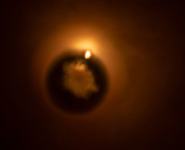
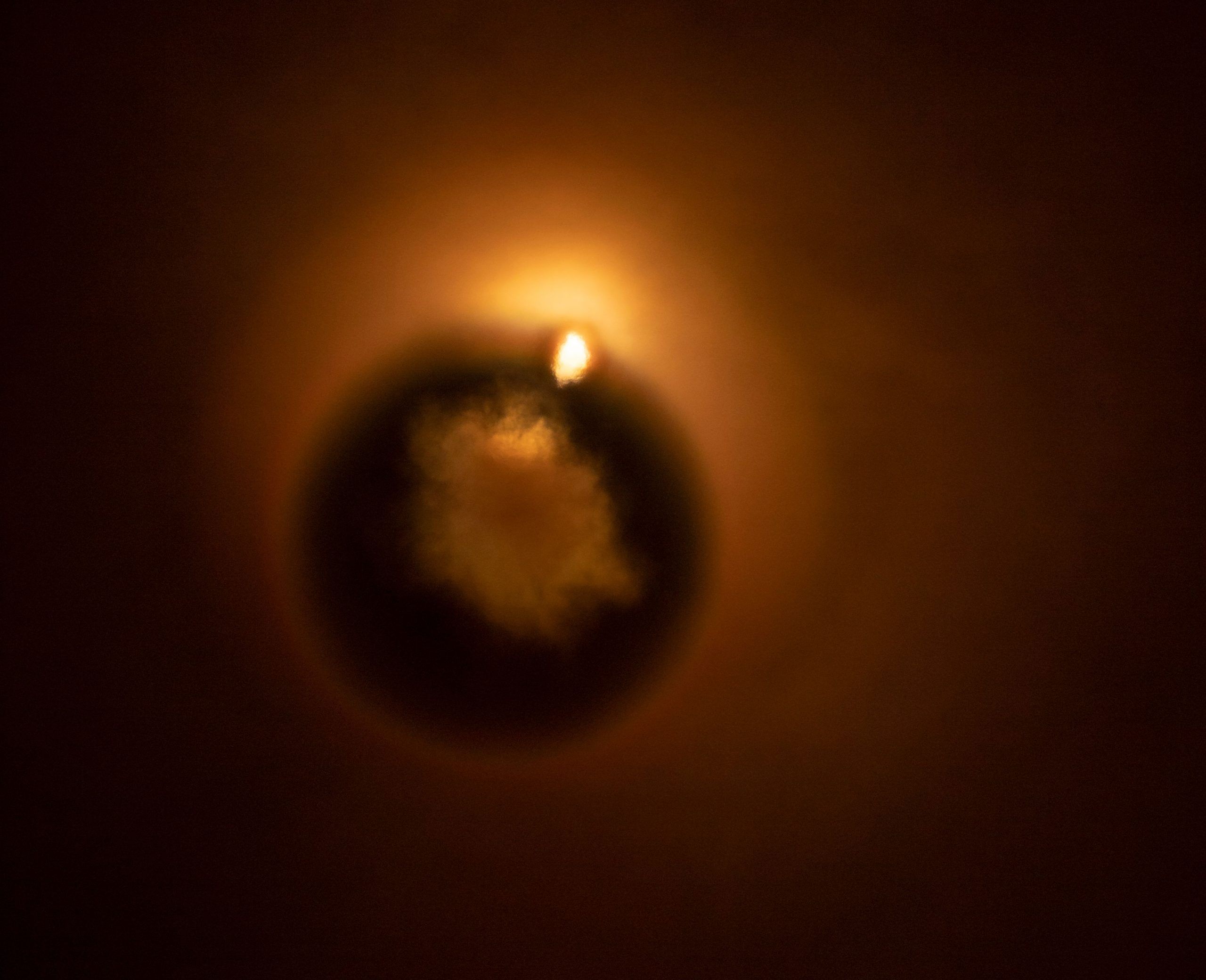
 torontosun.com
torontosun.com
The DART payload, about the size of a vending machine, will journey 10 months to nudge the space boulder off course
Author of the article:Reuters
Reuters
Steve Gorman
Publishing date:Nov 24, 2021 • 21 hours ago • 3 minute read • 6 Comments
In this handout image courtesy of NASA released on November 23, 2021, the SpaceX Falcon 9 rocket launches with the Double Asteroid Redirection Test, or DART, spacecraft onboard, "AFP PHOTO / NASA / BILL INGALLS " - NO MARKETING - NO ADVERTISING CAMPAIGNS - DISTRIBUTED AS A SERVICE TO CLIENTS (Photo by BILL INGALLS/NASA/AFP via Getty Images)
In this handout image courtesy of NASA released on November 23, 2021, the SpaceX Falcon 9 rocket launches with the Double Asteroid Redirection Test, or DART, spacecraft onboard, "AFP PHOTO / NASA / BILL INGALLS " - NO MARKETING - NO ADVERTISING CAMPAIGNS - DISTRIBUTED AS A SERVICE TO CLIENTS (Photo by BILL INGALLS/NASA/AFP via Getty Images) PHOTO BY BILL INGALLS/NASA /AFP via Getty Images
Article content
LOS ANGELES — A spacecraft that must ultimately crash to succeed was launched late on Tuesday from California on a NASA mission to demonstrate the world’s first planetary defence system, designed to deflect an asteroid from a potential doomsday collision with Earth.
Advertisement
STORY CONTINUES BELOW
Article content
The DART spacecraft soared into the night sky at 10:21 p.m. Pacific time on Tuesday (1:21 a.m. Eastern) from Vandenberg U.S. Space Force Base, about 150 miles northwest of Los Angeles, carried aboard a SpaceX-owned Falcon 9 rocket.
The launch was shown live on NASA TV.
The DART payload, about the size of a vending machine, was released from the booster a few minutes after launch to begin a 10-month journey into space, some 6.8 million miles (11 million km) from Earth.
Moments later the rocket’s reusable lower stage flew back to Earth and safely touched down on a landing vessel floating in the Pacific in what has become a routine part of the cost-cutting launch sequence pioneered by SpaceX.
DART will fly under the guidance of NASA’s flight directors until the last hours of its odyssey, when control will be handed over to an autonomous on-board navigation system.
Advertisement
STORY CONTINUES BELOW
Article content
The mission’s finale will test spacecraft’s ability to alter an asteroid’s trajectory with sheer kinetic force, plowing into it at high speed to nudge the space boulder off course just enough to keep our planet out of harm’s way.
Cameras mounted on the impactor and on a briefcase-sized mini-spacecraft to be released from DART about 10 days beforehand will record the collision and beam images of it back to Earth.
In this handout image courtesy of NASA released on November 23, 2021, the SpaceX Falcon 9 rocket launches with the Double Asteroid Redirection Test, or DART, spacecraft onboard. (Photo by BILL INGALLS/NASA/AFP via Getty Images)
In this handout image courtesy of NASA released on November 23, 2021, the SpaceX Falcon 9 rocket launches with the Double Asteroid Redirection Test, or DART, spacecraft onboard. (Photo by BILL INGALLS/NASA/AFP via Getty Images)
The asteroid that DART is aiming for poses no actual threat and is tiny compared with the cataclysmic Chicxulub asteroid that struck Earth some 66 million years ago, leading to extinction of the dinosaurs. But scientists say smaller asteroids are far more common and of greater theoretical concern in the near term.
Advertisement
STORY CONTINUES BELOW
Article content
DART’s target is an asteroid “moonlet” the size of a football stadium that orbits a chunk of rock five times larger in a binary asteroid system named Didymos, the Greek word for twin.
The team behind DART, short for Double Asteroid Redirection Test, chose the Didymos system because its relative proximity to Earth and dual-asteroid configuration make it ideal for observing the results of the impact.
BUMPING ASTEROID MOONLET
The plan is to fly the DART spacecraft directly into the moonlet, called Dimorphos, at 15,000 miles per hour (24,000 kph), bumping it hard enough to shift its orbital track around the larger asteroid.
In this handout image courtesy of NASA released on November 23, 2021, the SpaceX Falcon 9 rocket launches with the Double Asteroid Redirection Test, or DART, spacecraft onboard. (Photo by BILL INGALLS/NASA/AFP via Getty Images)
In this handout image courtesy of NASA released on November 23, 2021, the SpaceX Falcon 9 rocket launches with the Double Asteroid Redirection Test, or DART, spacecraft onboard. (Photo by BILL INGALLS/NASA/AFP via Getty Images)
Cameras on the impactor and on a briefcase-sized mini-spacecraft released from DART about 10 days beforehand will record the collision and beam images back to Earth. Ground-based telescopes will measure how much the moonlet’s orbit around Didymos changes.
Advertisement
STORY CONTINUES BELOW
Article content
The DART team expects to shorten Dimorphos’ orbital track by 10 minutes but would consider at least 73 seconds a success. A small nudge to an asteroid millions of miles away would be sufficient to safely reroute it.
DART is the latest of several NASA missions of recent years to explore and interact with asteroids, primordial rocky remnants from the solar system’s formation 4.6 billion years ago.
Last month, NASA launched a probe on a voyage to the Trojan asteroid clusters orbiting near Jupiter, while the grab-and-go spacecraft OSIRES-REx is on its way back to Earth with a sample collected last October from the asteroid Bennu.
The Dimorphos moonlet is one of the smallest astronomical objects to receive a permanent name and is one of 27,500 known near-Earth asteroids of all sizes tracked by NASA.
Although all none poses a foreseeable hazard to humankind, NASA estimates many more asteroids remain undetected in the near-Earth vicinity.
The DART spacecraft, cube-shaped with two rectangular solar arrays, is due to rendezvous with the Didymos-Dimorphos pair in late September 2022.
NASA put the entire cost of the DART project at $330 million, well below that of many of the space agency’s most ambitious science missions.




NASA launches spacecraft destined to deflect asteroid
The DART payload, about the size of a vending machine, will journey 10 months to nudge the space boulder off course
NASA says giant asteroid could enter earth's orbit later this month
Author of the article:
Postmedia News
Publishing date:
Dec 01, 2021 • 16 hours ago • < 1 minute read •
13 Comments
NASA says a large asteroid will enter Earth's orbit later this month.
NASA says a large asteroid will enter Earth's orbit later this month. Photo by Files /Getty Images
Article content
NASA says an asteroid that’s bigger than the Eiffel Tower will enter the Earth’s orbit later this month.
But don’t panic, the 330-metre-long chunk of space rock is expected to miss the earth on Dec. 11.
Asteroid 4660 Nereus will come within 7.4-million kilometres of Earth, according to NASA.
Nasa considers anything passing within 190-million kilometres of our planet to be a Near-Earth Object (NEO).
Thousands of NEOs are tracked by scientists to monitor whether they’re on a collision course with our planet.
Any of these objects that comes within 7.4 -million kilometres of Earth are considered to be “potentially hazardous.”
 cneos.jpl.nasa.gov
cneos.jpl.nasa.gov

 torontosun.com
torontosun.com
Author of the article:
Postmedia News
Publishing date:
Dec 01, 2021 • 16 hours ago • < 1 minute read •
13 Comments
NASA says a large asteroid will enter Earth's orbit later this month.
NASA says a large asteroid will enter Earth's orbit later this month. Photo by Files /Getty Images
Article content
NASA says an asteroid that’s bigger than the Eiffel Tower will enter the Earth’s orbit later this month.
But don’t panic, the 330-metre-long chunk of space rock is expected to miss the earth on Dec. 11.
Asteroid 4660 Nereus will come within 7.4-million kilometres of Earth, according to NASA.
Nasa considers anything passing within 190-million kilometres of our planet to be a Near-Earth Object (NEO).
Thousands of NEOs are tracked by scientists to monitor whether they’re on a collision course with our planet.
Any of these objects that comes within 7.4 -million kilometres of Earth are considered to be “potentially hazardous.”
NEO Earth Close Approaches
NASA's Near-Earth Object (NEO) web-site. Data related to Earth impact risk, close-approaches, and much more.

NASA says giant asteroid could enter Earth's orbit later this month
NASA says giant asteroid could enter earth's orbit next week
Stargazer captures night sky from Sheffield garden
By Oli Constable
BBC News
21 March 2021
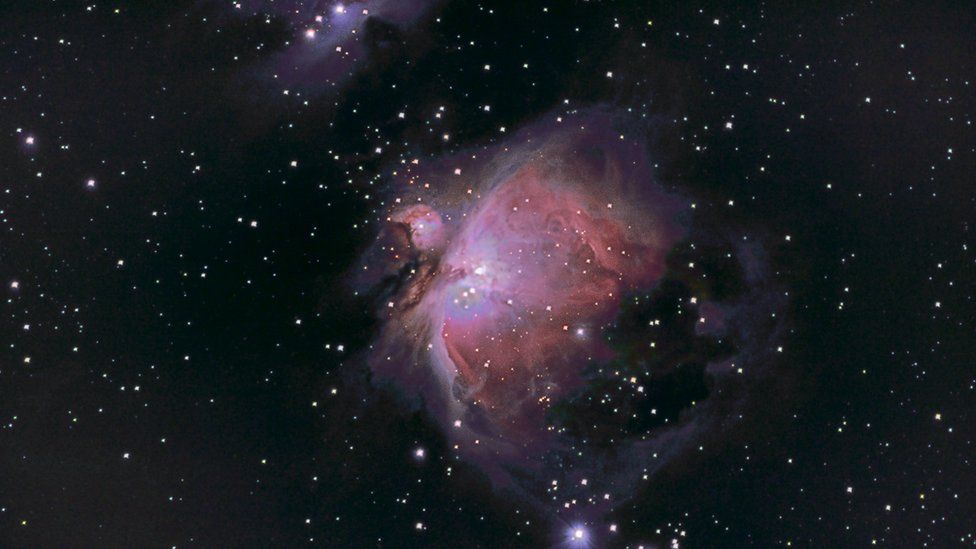
The Orion Nebula captured from Russell Atkin's Sheffield garden
An amateur astronomer has taken "one of his best" photos of the Orion Nebula from his garden during lockdown.
Russell Atkin, from Sheffield, started pointing his camera towards the night sky in 2013, sharing his pictures on social media.
He said it had been an "eight-year learning curve" which saw him travel to Chile before the pandemic.
Covid restrictions have limited Mr Atkin to his garden but his photos continue to impress viewers.
"You can see this with your naked eye, but not in this detail," Mr Atkin said, describing his newest picture of the gas cloud.
"It's the closest region of star birth to Earth and it's about 1,350 light years away."
Stargazer captures night sky from Sheffield garden - BBC News
Not bad, here's my first attempt at Orion.

